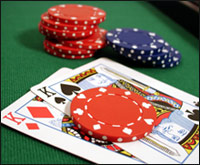TWO PAIR
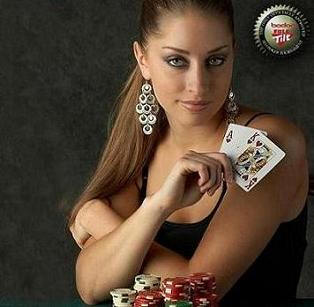 The strategies presented in this chapter are for two pair when you match both your
hole cards with two of the flop cards. If there is a pair on the flop, then strategy is
more like playing either an overpair/top pair, or middle/bottom pair. For example, if
the flop is T55 and you have JT, I treat this like top pair for strategy purposes. You
will flop two pair matching both hole cards approximately once every 50 hands...
next
The strategies presented in this chapter are for two pair when you match both your
hole cards with two of the flop cards. If there is a pair on the flop, then strategy is
more like playing either an overpair/top pair, or middle/bottom pair. For example, if
the flop is T55 and you have JT, I treat this like top pair for strategy purposes. You
will flop two pair matching both hole cards approximately once every 50 hands...
next
Top Pair/Overpair
The relative strength of your hand depends on the following factors:How high your pair is. When the flop is favorable but your pair is vulnerable to overcards, you generally should choose the best strategy that will drive out your opponents by betting, raising, or check-raising, The higher the pair the more risks you can take since a free card is less likely to hurt you...next
Middle/Bottom Pair
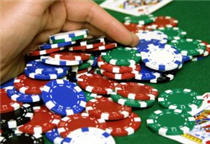 Middle or bottom pair is when you hold a pair but there is another card on the board
higher than your pair. For example, you hold JJ, QT, or A8, with a flop of KT8. One
of the more common mistakes made by weak players is drawing too often with poor
pot odds to middle or bottom pair...
next
Middle or bottom pair is when you hold a pair but there is another card on the board
higher than your pair. For example, you hold JJ, QT, or A8, with a flop of KT8. One
of the more common mistakes made by weak players is drawing too often with poor
pot odds to middle or bottom pair...
next
Flush Draws
Strategies for flush draws with a three-suited flop are very different than with a two- suited flop. Strategies for two-suited flops can vary depending on other qualities of the flop. For example, the flop could also have a pair or connected cards. Flush draws increase in value when you add other elements to your hand such as straight draws, pairs, or overcards... nextStraight Draws
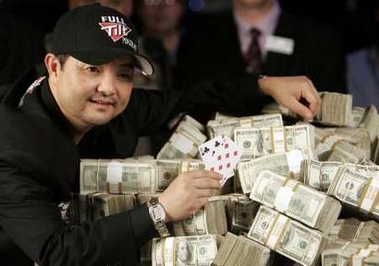 There are three main types of straight draws: open-ended using two cards in your
hand, open-ended using one card in your hand, and gut-shot draws. Lei's quickly
summarize the odds for straight draws. An open-ended straight draws is
approximately 2.2 to 1 against improving by the river. A gut-shot draw is
approximately 5 to 1, but is 11 to 1 when you plan on just taking one more card. An
open-ended straight with a pair has 10 good outs (eight for the straight and two for
trips), which is 1.6 to 1. An open-ended with two overcards should hit a little over
50% of the time, so you are even money. Be careful however with an overcard out
since it could be counterfeited by giving an opponent a straight...
next
There are three main types of straight draws: open-ended using two cards in your
hand, open-ended using one card in your hand, and gut-shot draws. Lei's quickly
summarize the odds for straight draws. An open-ended straight draws is
approximately 2.2 to 1 against improving by the river. A gut-shot draw is
approximately 5 to 1, but is 11 to 1 when you plan on just taking one more card. An
open-ended straight with a pair has 10 good outs (eight for the straight and two for
trips), which is 1.6 to 1. An open-ended with two overcards should hit a little over
50% of the time, so you are even money. Be careful however with an overcard out
since it could be counterfeited by giving an opponent a straight...
next
Overcards
Trash Hands
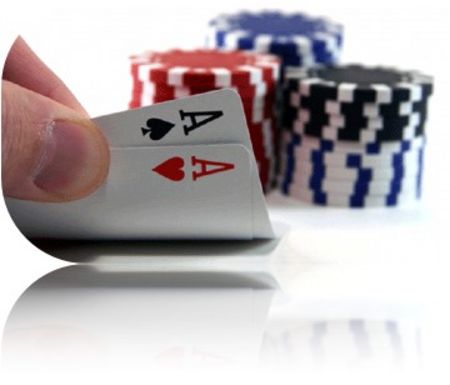 I define a trash hand as a hand that has no pairs, no straight or flush draws, and
does not have two overcards.
I define a trash hand as a hand that has no pairs, no straight or flush draws, and
does not have two overcards. For example A ♣ 7 ♣ , 7 ♥ 4 ♥, or K ♠ 8 ♦ with a Q ♦ T ♥ 5 ♠ flop.
The only time when trash hands are playable is when you are against one or two opponents and you believe a bluff can be successful. Sometimes ace high is the best hand, which might even justify a bet... next
The Turn
The River
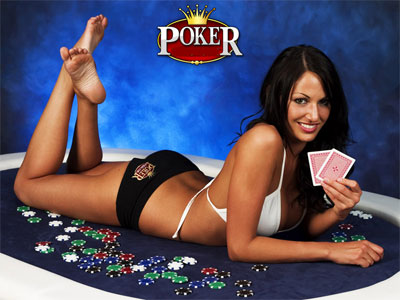 The river is a much different type of betting, round, as now all cards have been
shown. You either have a really strong hand, a busted draw, a medium holding, or a
decent hand with worries that an opponent hit a draw. Most players make quick
decisions on the river without thinking through the various possibilities. For
example, should you always bet out when you think you have the best hand? The
answer is no. Should you check and call a set when the board has four suited cards
or four connected cards? Sometimes you should bet out, yet most players make the
quick, most obvious decision, which is sometimes incorrect...
next
The river is a much different type of betting, round, as now all cards have been
shown. You either have a really strong hand, a busted draw, a medium holding, or a
decent hand with worries that an opponent hit a draw. Most players make quick
decisions on the river without thinking through the various possibilities. For
example, should you always bet out when you think you have the best hand? The
answer is no. Should you check and call a set when the board has four suited cards
or four connected cards? Sometimes you should bet out, yet most players make the
quick, most obvious decision, which is sometimes incorrect...
next
Playing Your Opponent
Bankroll Management
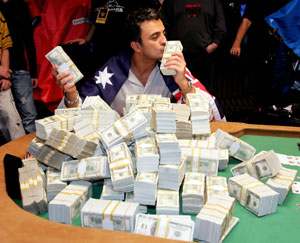
A good understanding of the fluctuations that will occur playing Hold'em should help you manage your emotions and bankroll; otherwise, this game can be extremely frustrating, and if you are not careful, you could lose your entire bankroll in a short period of time. ...next
Internet Poker Site and Game Selection

